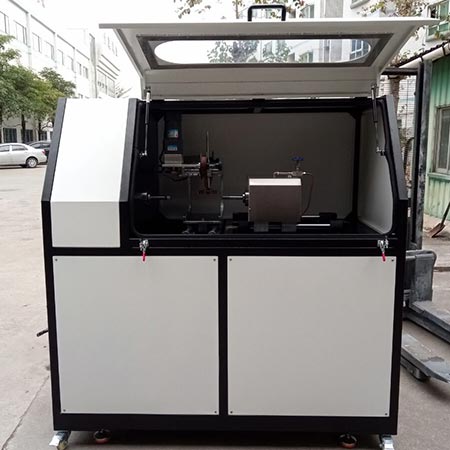Fire hoses play a crucial role in firefighting operations, serving as a lifeline to deliver water or other extinguishing agents to control and extinguish fires. The reliability and durability of these hoses are paramount for the safety of firefighters and the success of firefighting efforts. To guarantee the effectiveness of fire hoses in demanding conditions, manufacturers employ wear resistance testing machines.
Importance of Wear Resistance Testing:
Fire hoses are subjected to various harsh conditions, including high-pressure water flow, exposure to extreme temperatures, and rough handling during deployment. These factors can contribute to wear and tear, potentially compromising the integrity of the hoses over time. Wear resistance testing is essential to ensure that fire hoses can withstand the rigors of real-world firefighting scenarios.
Key Parameters Tested:
1.Abrasion Resistance: Fire hoses may come into contact with rough surfaces or debris during deployment. Abrasion resistance testing evaluates how well a hose can withstand friction and rubbing against different surfaces without compromising its structural integrity.
2.Flexibility and Bend Radius: Fire hoses need to be flexible enough to navigate through tight spaces and around obstacles. Testing for flexibility and bend radius ensures that hoses can maintain their structural integrity even when subjected to repeated bending and flexing.
3.Pressure Resistance: Fire hoses are designed to handle high-pressure water flow. Testing ensures that hoses can maintain their integrity and effectively deliver water at the required pressure levels without leaks or bursts.
4.Heat Resistance: Exposure to high temperatures, especially in proximity to flames, is common during firefighting. Heat resistance testing assesses how well fire hoses can withstand elevated temperatures without deterioration. Advancements in Wear Resistance Testing Machines:
Advancements in Wear Resistance Testing Machines:
Recent technological advancements have significantly improved the precision and efficiency of wear resistance testing for fire hoses.
1.Automated Testing Systems: Modern testing machines are equipped with automated features, allowing for consistent and repeatable testing procedures. Automated systems can simulate various conditions, providing a more accurate representation of real-world scenarios.
2.Sensor Integration: Wear resistance testing machines now incorporate advanced sensors to collect data on key parameters in real-time. This data is invaluable for manufacturers in refining their hose designs and materials for optimal performance.
3.Simulation of Dynamic Conditions: Advanced testing machines can simulate dynamic conditions, such as the movement of hoses during deployment. This ensures that wear resistance is evaluated under conditions that closely mimic the challenges faced by firefighters in the field.
Conclusion:
Wear resistance testing for fire hoses is an indispensable step in ensuring the reliability and durability of these critical firefighting tools. With the continuous advancement of testing technology, manufacturers can refine their designs to produce fire hoses that meet and exceed the demanding requirements of firefighting operations.
 WhatsApp:
WhatsApp: Mobile Phone:
Mobile Phone: Contact Now
Contact Now